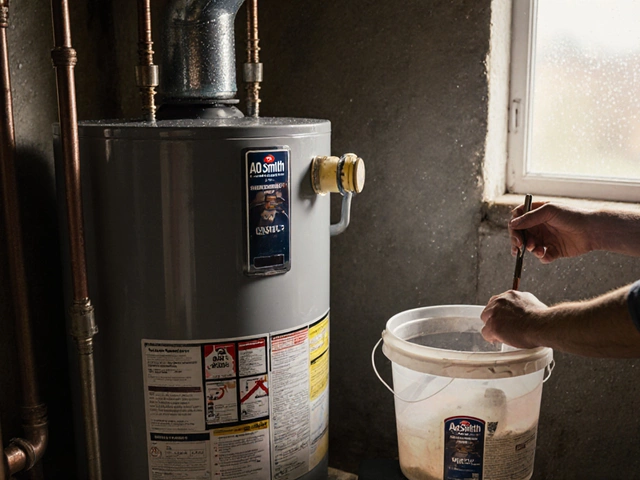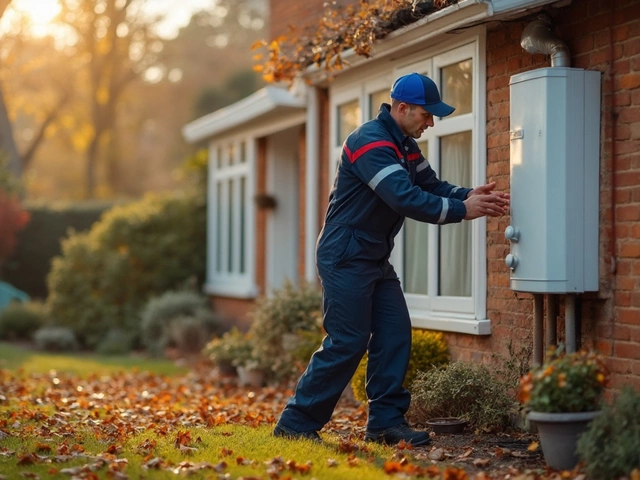That hum you hear every time you turn on the extractor, and suddenly it’s gone? Or maybe the fan is rattling like a loose drawer. Kitchen fans are the silent helpers that keep cooking smells and steam out of your space, but they can act up just as easily as any other appliance. Below you’ll find the most common problems, simple DIY steps, and clear signs that you should ring a professional.
Fan won’t start. The first thing to check is the power. Is the switch on? Is the fuse or circuit breaker tripped? Many fans are wired to a wall switch, so a quick test with a lamp can confirm if the outlet works. If power is fine, the motor’s thermal cut‑out may have tripped – give it a few minutes to cool, then try again.
Weak suction or airflow. Grease, dust and cooking debris love to hide in the fan blades and the ductwork. Over time the build‑up chokes the airflow. Remove the filter (if your model has one) and clean it in hot, soapy water. If the filter looks fine, unscrew the outer cover, wipe the blades with a damp cloth, and vacuum the duct as far as you can reach.
Loud or rattling noise. Noise usually means something’s loose. Check the mounting screws that hold the fan housing to the ceiling or wall. Tighten any that feel loose. Also look for a broken blade – a cracked blade will wobble and make a constant whine. Replacing a blade is cheaper than swapping the whole unit.
Odour or burning smell. A scorched smell isn’t something to ignore. It often points to a failing motor bearing or a short circuit. Turn the fan off immediately, unplug it, and inspect the motor housing for discoloration. If the motor feels hot to the touch, it’s time to call a qualified electrician.
Intermittent operation. If the fan works sporadically, the issue could be a faulty switch or a loose connection inside the unit. Spray a little contact cleaner into the switch opening (make sure the fan is unplugged first) and see if it stabilises.
Most of the above issues can be tackled with a screwdriver, a cleaning brush and a bit of patience. Start by unplugging the fan, then remove the outer cover – most models snap off or are held by two screws. Give the interior a good clean, tighten any loose screws, and reassemble.
If you notice a burnt motor, frayed wiring, or the fan still won’t spin after you’ve cleared out debris and checked the switch, it’s time to bring in an expert. Working on electric motors without proper knowledge can be dangerous, and a qualified technician will have the right tools to test motor windings and replace parts safely.
When you decide to replace the whole unit, keep a few things in mind: choose a fan with a similar airflow rating (measured in CFM), ensure the duct size matches your existing pipe, and look for models with easily removable filters for future cleaning. A fresh fan can cost anywhere from £50 to £200, depending on size and features.
In short, a lot of kitchen fan headaches come from simple neglect – a clogged filter, a dusty motor, or a loose screw. Regular cleaning every few months and a quick visual check can keep your fan humming happily for years. When the problem goes beyond cleaning and tightening, don’t risk a bigger repair – call a local appliance repair service who knows kitchen ventilation inside out.

If your extractor fan has suddenly stopped working, it's not just annoying but can lead to bigger problems like excess moisture and lingering odors. This article will delve into common issues with extractor fans and provide practical solutions you can try at home. Learn about potential causes, from power supply problems to sensor malfunctions, along with straightforward fixes. Some tips might even save you from calling in a professional. Get your fan back up and running with ease!

Is fixing a 4-year-old dishwasher actually worth it? Get honest advice, money-saving tips, and clear facts for making the smartest call.

AO Smith, Bradford White, and Rheem are the most durable water heater brands, often lasting 12-15 years with proper maintenance. Learn what really affects lifespan and how to make your heater last longer.

A reliable heat pump is essential for maintaining comfort in your home. Some signs indicate that your heat pump might need replacing, such as increased energy bills, inconsistent temperatures, strange noises, old age, and frequent repairs. Understanding these warning signs can help you decide if it's time to invest in a new system.

Replacing the anode rod in a water heater can extend its lifespan and prevent costly repairs. This article breaks down the cost of replacement, including materials and labor, and discusses why it's a crucial part of water heater maintenance. Discover how often anode rods should be checked and what signs indicate it's time for a replacement. Whether you DIY or hire a pro, understanding these factors can save you money and stress.

Replacing a boiler can seem like a daunting task, but knowing what to expect can make the process easier. Typically, boiler replacement involves several steps including removing the old unit, choosing the right size and type for your home, and ensuring proper installation. Skilled professionals often make the experience smoother by handling the technical aspects and minimizing disruption. Preparation and understanding of the process can help homeowners tackle this job with confidence.